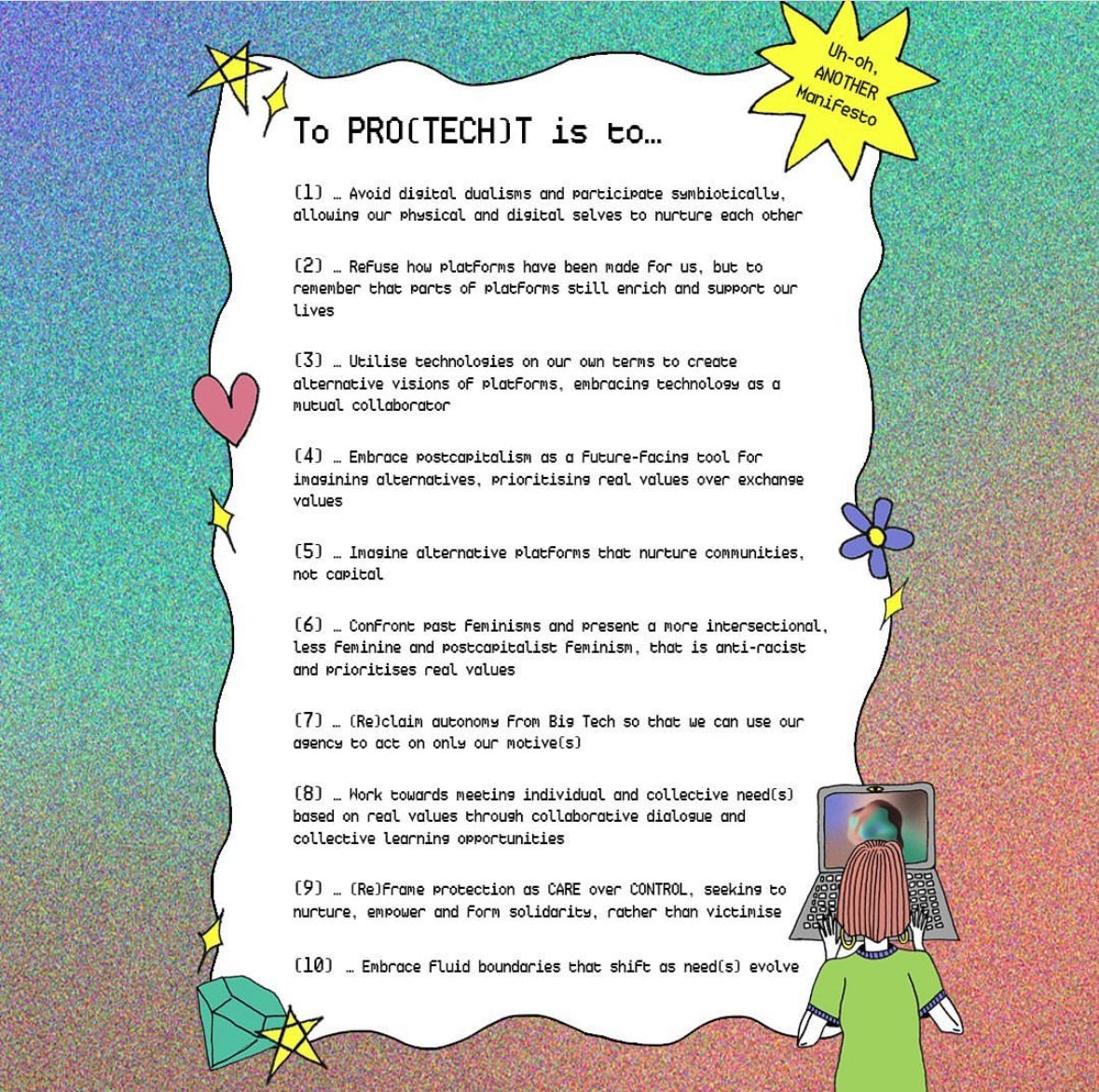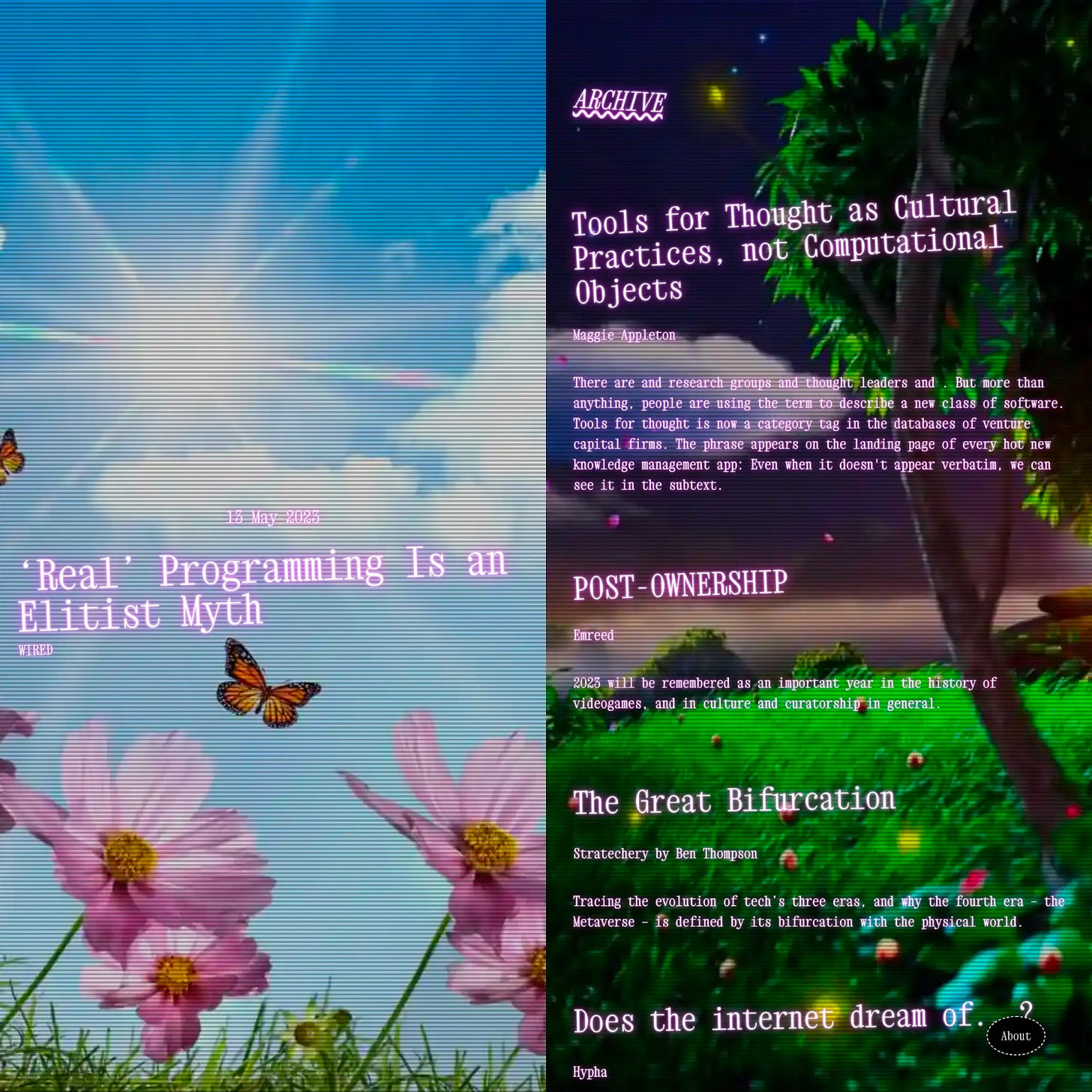MØRNING. Yes yes, we’ve all heard of the techbro, and their trusty brogrammers. However, have you heard of SOFTER, the grassroots community, network and event series committed to re-writing the narrative that tech is hard. That’s more like it, right?
Last Saturday, MØRNING attended the very first edition of Softer London, the latest iteration of the SOFTER Digital Futures event series organised by Christie Morgan and Rachel Barrie. The event was previously held in Copenhagen, and seeks to address the need for more inclusive, diverse and intersectional feminist perspectives and spaces across the creative/tech/new media industries.
SOFTER centres and celebrates the ‘soft’ (slow) practices that often align with marginalised communities but are so clearly lacking in tech. Bringing together technologists, designers, artists, thinkers, educators (and more) to a space where open-source knowledge sharing is paramount.
What became clear to us throughout the day is that there are conversations we desperately need to be having about tech. So join us, challenge yourself, and begin to softly think about these things now.
Glitching is good for us.
Glitching, as introduced by Kim Lê Boutin (digital artist and an innovation expert, founder of loadmo.re), is not an indication of fallibility or error, but a cyberfeminist act. Glitch design is a tool which the online landscape needs more of, just as entrenched socio-cultural systems do, in order to disrupt and enact change.
“This glitch is a correction to the “machine”, and, in turn, a positive departure." On the Glitch Feminism Manifesto, L. Russell, The Society Pages, 2013
“This glitch is a correction to the “machine”, and, in turn, a positive departure." On the Glitch Feminism Manifesto, L. Russell, The Society Pages, 2013
How can you purposefully design a glitch into your next project, and use friction as a positive, emotional experience? Can you hijack a digital tool such as night mode or a spreadsheet, to create new conditions for creativity? Here at MØRNING, we chose to chat instead of churn our insights, via none other than our three headed dog and chatbot, Ø.
“A personal standout for me was Kim Lê Boutin’s talk on “How we glitch digital worlds”. To summarise what I learned, Be Femme Do Design.” Great, Director
“A personal standout for me was Kim Lê Boutin’s talk on “How we glitch digital worlds”. To summarise what I learned, Be Femme Do Design.” Great, Director
Tech, friend, and lover?
‘How can you avoid having an intimate relationship with tech?’ artist and technologist Tigris Li asked in the ‘Tenderithms: Intimacies and Technology’ panel, featuring speakers Andrew Mallinson of Feminist Internet, Koundinya Dhulipalla and Marta Klara. Speakers discussed the true intimacy of our relationship with tech in a radical, unafraid way.
“Tigris referenced our phones and laptops being monolithic in aesthetics despite us using these objects to intimately reflect who we are. This made me question the physics of our social media platforms and why we departed from the MySpace / Bebo era of self design” Shadeh, MØRNING Strategy Lead
Humans are deeply connected by the time, intention and bodily touch we afford our best technologies: from images to written language, coding to avatars. So the question was raised, how can we better align our tech with our intrinsic human needs? The answer: why not romance it, and find out?
What selfish but necessary projects might help you to create and build something new? What pleasure, satisfaction or new contexts do you seek from online? Explore potential and find meaning together with tech.
Invite the inner child in.
Playfulness is a way to show up softly in a space that encourages you to be hard. Use online materials to test, feel and deepen your ideas (not to be confused with gamification). We were reminded to seek play with no impact, to ask questions and to trigger our emotions.
Co-creation for a gentler future.
Koundinya presented their project ‘gardengarden.garden’ (aka ‘www’) which imagines a softer digital future in which we ‘garden the garden’ of the web together. The project is a curated archive and collection of digital resources, updated via an informal network of people each active day.
The audience also participated in PRO(TECH)T’s ongoing, collaborative manifesto build. Its purpose: to explore together how best to protect our future(s) in online community spaces.

"Seeing so many people in one room curious about nurturing Softer Digital Futures restored my faith that change is possible, even if only on a small scale" Kes, PRO(TECH)T
"Seeing so many people in one room curious about nurturing Softer Digital Futures restored my faith that change is possible, even if only on a small scale" Kes, PRO(TECH)T
The concept of co-creation is transformed in these projects, as friction and an evolutionary focus are introduced: harder to be softer (and stronger!).
Tech to discover the self.
Exercise your individual desires and intuitions with tech. Creative technologist Olivia Ema questioned, what does it mean to be both the observer and the observed (a la Sims), and to peer into reality in this way?
“References to The Sims really resonated with me through discussing the power of playing as yourself and testing out your identities, as a way to discover the self. I found this especially relevant as we are constantly practicing self gaze through the black mirror of our tech” Shadeh, MØRNING Strategy Lead
We were reminded that we are all digital vessels, with tech being a vehicle to self questioning.
Aligning with, instead of dominating over tech.
Tech was discussed as an autonomous partner. The sooner we begin to align our intrinsic human needs and interests with it, rather than appropriate it for human use, the better. Aka, treat your technology as a friend, a hacky accomplice even.
Approach humanity as a construct.
‘Girling’ online was understood as an important tool and productive inhuman category. Fragile binaries (such as humanism and gender) were explored through this cyberfeminist lens, as frequently discussed by speaker and theorist Alex Quicho. The girl is a way of being, that we can all channel. Girling is resisting, defying and transcending limitations in the online, thus making way for a better future.
So, where do we go from here? Start being soft.
We end with our biggest takeaway of the day, which was echoed back to us by everyone we listened to and spoke to: that having softer and slower conversations about tech ‘has and always will be radical’ (as Alex Quicho put). Coming together to talk, connect and work towards a softer digital future showed us, first hand, that radical potential to transform the way we think about technology.
SOFTER founders Ida Lissner and Nicole Jonasson say it all: ‘There are endless possibilities and endless uncertainties. Don’t leave digital futures in the hands of those who want to move fast and break things. Softer values can make space for the new voices tech needs ’.
And on that note, have a soft day readers!
Follow softerlondon and softer.insta to stay up to date on all future events.
Words: Shadeh Kavousian, Kes Inkersole, Great Okuson
Editors: Sui Donovan, Letty Cole






